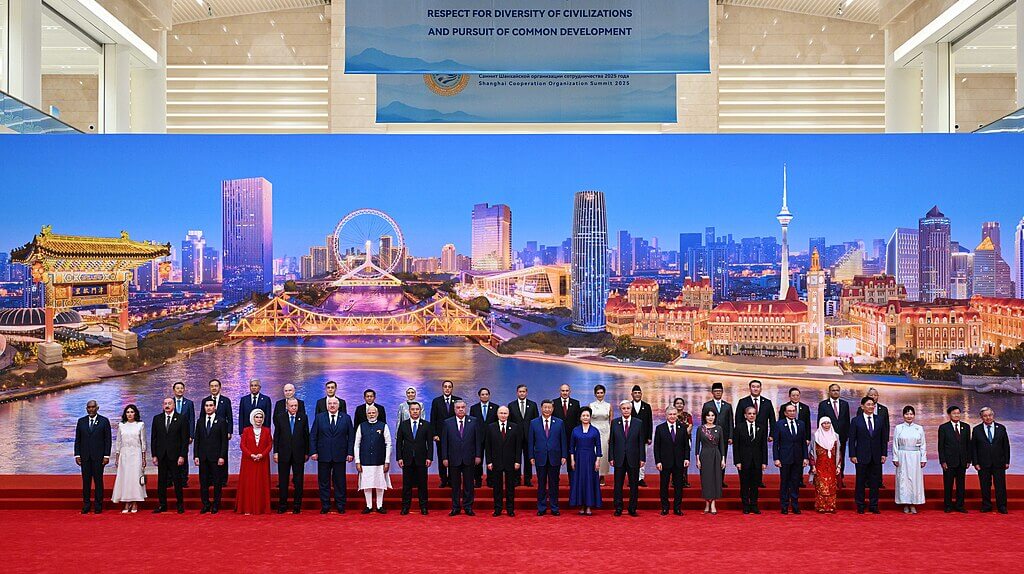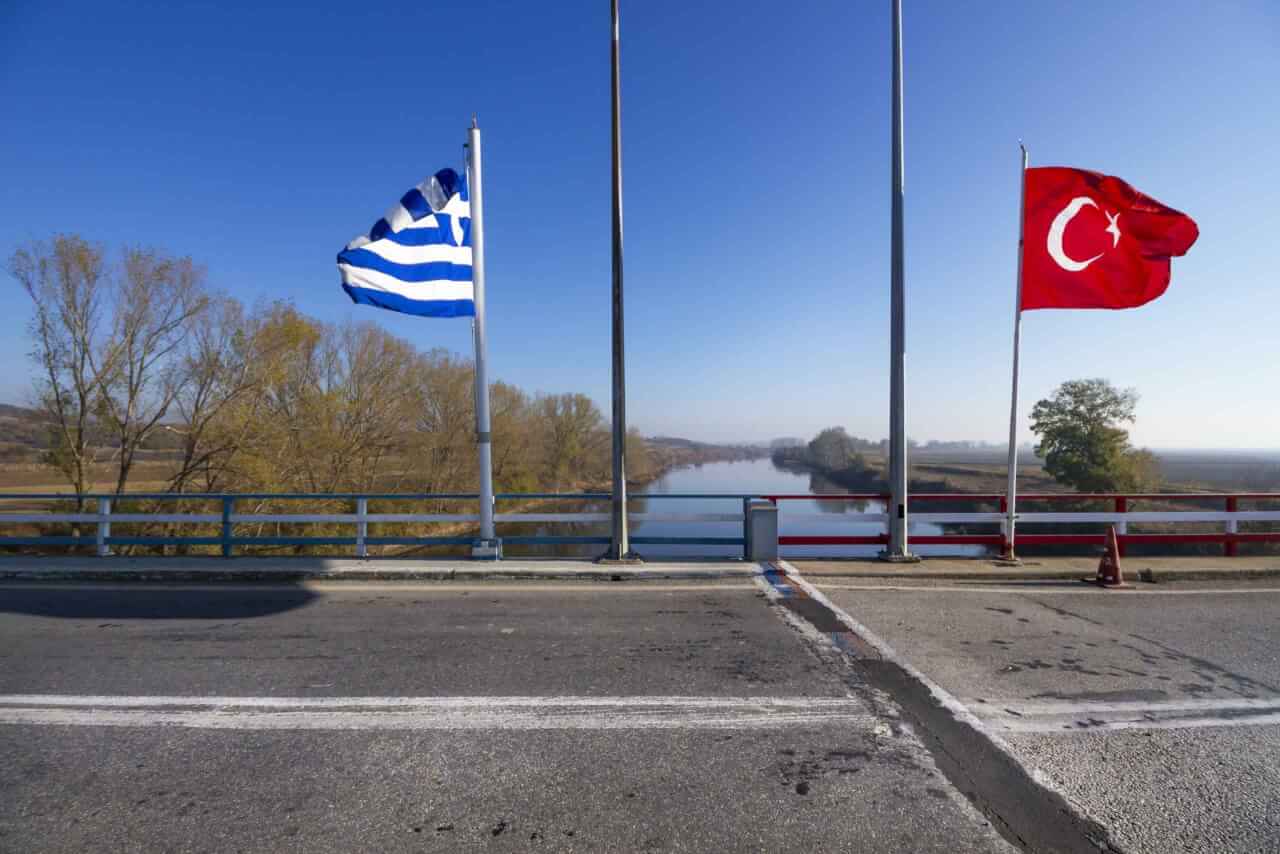Türkiye and the United States have never maintained a simple alliance. For over seventy-five years, their partnership has oscillated between mutual admiration and mutual frustration. From the Cold War’s iron discipline to the Syrian war’s uneasy pragmatism, the relationship has survived crises that would have broken lesser alliances. However, to this day, both sides often misread or misperceive each other—not because of ideology or ill will, but because they fail to analyze the issues at the right level.
Most explanations of Türkiye–United States relations emphasize external factors: NATO’s security framework, Soviet containment, American hegemony, or the shifting geometry of the global order and the Middle East. However, this overlooks a more profound truth: alliances are not just international arrangements—they are also domestic projects. To understand Türkiye’s enduring, yet volatile relationship with the United States, we must look inside the United States and the Turkish state. The pattern becomes clearer when viewed through the Institutions–Agencies–Ideologies (IAI) framework, which I propose as a lens for understanding alliance behavior.
The Institutions–Agencies–Ideologies (IAI) Framework: A Domestic Triad
In most political systems, three elements shape foreign policy. First, institutions set the rules, routines, and bureaucratic capacity that ensure continuity. Second, agencies—such as leaders, ruling coalitions, political parties, and political elites—exercise discretion whether within or outside these rules. Third, ideologies justify strategic choices by framing them in moral and national terms for both domestic and international audiences. Foreign policy, then, is not merely a response to the external environment. It is the outcome of how these three forces interact at home.
If institutions are strong and coherent, leadership autonomy narrows. When ideology aligns with institutional norms, policy remains stable and predictable. However, when leaders dominate and ideology diverges from inherited norms, states act independently—even within alliances. While the IAI triad is often used to analyze semi-institutionalized regimes like Türkiye’s, it also functions—though differently—within advanced democracies like the United States.
In the United States, this triad also operates powerfully. The institutional framework—anchored in the Pentagon, Congress, and the State Department—creates both stability and inertia in policy toward Türkiye. American agencies, from presidents to defense secretaries, often approach Türkiye through the prism of broader regional strategies rather than as an autonomous partner. Meanwhile, ideology—whether Cold War liberal internationalism, post-9/11 counterterrorism, or current democracy-versus-autocracy narratives—frames Türkiye as a functional ally rather than a complex domestic actor. This structural asymmetry helps explain persistent misperceptions between the two sides.
Phase I: Cold War Conformity (1945–1960): The Truman Doctrine and NATO Accession
When the United States extended the Truman Doctrine to Türkiye and Greece in 1947, it was more than a geopolitical move—it marked a domestic turning point. American aid not only strengthened Türkiye’s military capacity but also reshaped the state from within, fostering a bureaucratic culture rooted in Western alignment. This new orientation found expression across key institutions. The Turkish Armed Forces and the Ministry of Foreign Affairs became the main pillars of this shift, their structures and worldviews increasingly shaped by US training, NATO integration, and Western strategic thinking.
Economic agencies that managed Marshall Plan assistance, and later the State Planning Organization, absorbed American models of planning and development, embedding Western technical expertise into national policy. Educational and cultural institutions, from universities to exchange programs, produced a generation of officials and professionals who saw progress through a Western lens. In this environment, political leaders such as İsmet İnönü and Celal Bayar regarded partnership with the United States not as a simple policy option but as Türkiye’s path to modernity and security—a civilizational choice as much as a strategic one.
Agency—leadership discretion—was therefore limited. Even when Prime Minister Adnan Menderes adopted a more independent rhetoric in the mid-1950s, institutional inertia and ideological alignment kept the alliance on a steady course. The result was a disciplined partnership: predictable, hierarchical, and effective, but lacking flexibility.
On the borders of the United States, Türkiye’s integration into NATO was driven more by strategic interests than by Türkiye’s own containment. US institutions saw Ankara as a key stronghold on the Soviet frontier. Ideologically, the partnership aligned well with Washington’s global narrative of defending the “Free World.” However, this also meant that US policymakers often viewed Türkiye as an extension of American strategy rather than an independent actor—a perception that sowed the seeds of future friction.
Phase II: Controlled Autonomy (1960–1980): Johnson Letter and the Limits of Dependence
In 1964, American President Lyndon Johnson’s now-infamous letter warned Türkiye against using American-supplied weapons in Cyprus, implying Washington might not defend Türkiye if the Soviets intervened. For many Turkish elites, this was a rude awakening—a reminder that alliance loyalty did not guarantee equality.
The Johnson Letter became a watershed moment. Turkish leaders began to test the boundaries of autonomy. Bülent Ecevit’s decision to intervene militarily in Cyprus in 1974 was justified as an act of sovereignty, even at the cost of US sanctions.
During this phase, institutions remained relatively strong, but leadership agency within them expanded. Ideology also diversified: Westernism persisted but was increasingly challenged by nationalism and emerging leftist and Islamist currents. The alliance endured but was redefined—no longer unquestioning loyalty, but conditional cooperation.
Phase III: Fragmented Pragmatism (1980–2002): Özal’s Activism and Post–Cold War Fluidity
Turgut Özal’s leadership in the 1980s symbolized a pragmatic turn. He liberalized Türkiye’s economy and cautiously diversified foreign policy, while keeping NATO commitments intact. The end of the Cold War opened new spaces for maneuver—Central Asia, the Balkans, and the Middle East became arenas for Turkish activism. However, domestic politics were fragmented. Coalition governments, economic crises, and military interventions diluted institutional coherence. Ideological polarization between secularists, nationalists, and Islamists made foreign policy reactive and inconsistent.
Türkiye cooperated with the United States during the 1991 Gulf War, yet domestic backlash limited its strategic depth. Ankara wanted flexibility, but its internal divisions constrained it. This was a period of limited autonomy under weak institutional coordination.
In Washington, meanwhile, the post-Cold War institutional confusion mirrored Ankara’s. The US lacked a coherent regional framework after the Soviet collapse, and agencies competed for influence—State, Defense, and Congress each defined Türkiye differently: as a democratic model, a military ally, or a human rights challenge. American ideology shifted toward liberal triumphalism, assuming convergence between Western and Turkish interests—a misperception that ignored Türkiye’s growing pluralism and domestic contestations.
Phase IV: Institutionalized Personalism (2002–2023): S-400s, Syria, and Selective Autonomy
The rise of the Justice and Development Party (AK Party) under Recep Tayyip Erdoğan marked the start of a new balance. State institutions were strengthened and reorganized, leadership authority became more centralized, and ideology shifted toward sovereigntist nationalism. Türkiye began practicing what could be called strategic compartmentalization—a process of cooperating with the United States in certain areas, like NATO missions, counterterrorism, and Ukraine, while diverging in others, such as Syria and defense procurement.
The outcome of this process is selective autonomy—a calibrated form of independence that enables Ankara to assert sovereignty in specific policy areas without severing its institutional and strategic ties to the West. In this model, compartmentalized cooperation serves as the operational method that sustains the alliance: bureaucracies on both sides preserve functional collaboration even when political and ideological relations deteriorate.
This balancing act—anchored by resilient institutions yet driven by assertive leadership—reflects what I term institutionalized personalism. It allows Türkiye to remain a reliable but independent ally, capable of engaging multiple power centers while preserving its own narrative of autonomy.
For the United States, domestic polarization and the erosion of bipartisan foreign-policy consensus have likewise undermined predictability. Successive US administrations—Obama’s cautious institutionalism in Syria, Trump’s transactional deal-making, and Biden’s values-based diplomacy—reflect shifting ideological interpretations of Türkiye’s place within a changing alliance.
The Trump presidency (2017–2021) intensified this dynamic. Both Trump and Erdoğan personalized foreign policy decision-making, sidelining traditional bureaucratic channels and favoring direct, leader-to-leader negotiations. This transactional approach produced tactical flexibility—such as last-minute deals over northern Syria or sanctions relief—but weakened institutional trust. Trump’s style both reflected and amplified US domestic polarization, further weakening bipartisan consensus on Türkiye policy.
Institutional inconsistency in Washington thus mirrored Ankara’s centralization. On both sides, domestic political transformations recast alliance management—from a strategic partnership grounded in institutional discipline to a pattern of compartmentalized cooperation and selective autonomy, marked by episodic confrontation yet enduring interdependence.
Lessons for Policymakers
The Türkiye-United States case challenges traditional ideas about alliances. It demonstrates that domestic factors influence alliance behavior as much as external pressures do. Institutions provide stability, but they do not control foreign policy. When strong, they ensure continuity, but they also lend legitimacy to influential leaders. Leadership choices are crucial. Individual leaders can reinterpret alliance commitments, adjust autonomy, and use crises as negotiation tools. Ideology is not just for show; it is fundamental. It helps governments justify foreign policy changes and gain public support.
Hybrid regimes—where strong institutions coexist with centralized leadership—are becoming more widespread amid the rise of populism. From Russia to India and the Gulf states, these systems depend on institutional legitimacy to sustain personalized power while claiming strategic autonomy. But even established democracies like the United States are not immune to institutional fragmentation and ideological polarization, which can distort alliance management.
Türkiye’s experience, therefore, is not unique—it is instructive. It shows how alliances can adapt, survive, and even thrive amid domestic transformations, as long as the balance between institutions, agency, and ideology remains intact.
Conclusion: The Domestic Roots of Alliance Resilience
The Türkiye–United States alliance endures not because of inertia, but because it constantly evolves through the interaction of institutions, leadership agency, and ideology—the three analytical pillars of the Institutions–Agencies–Ideologies (IAI) framework. This triadic structure provides both stability and adaptability: institutions embed cooperation in bureaucratic routines and defense architectures; leadership agency injects flexibility by recalibrating strategic choices in response to crises; and ideology furnishes legitimacy by aligning foreign policy shifts with domestic narratives of sovereignty, civilization, and identity. These internal mechanisms explain why the alliance persists even amid normative divergence, geopolitical competition, and mutual distrust.
From the IAI perspective, the Türkiye–US relationship represents a form of “structured resilience.” It survives not because both sides share values, but because their domestic systems—despite fragmentation—produce recurring incentives for cooperation. Institutional path dependencies in defense and diplomacy, leadership-driven crisis management, and ideologically reframed narratives of partnership collectively sustain the alliance through turbulence. The system adapts by redistributing weight among the three IAI pillars: when institutional trust weakens, leadership, diplomacy, and ideological justification expand to fill the gap.
This insight also carries comparative significance. Similar dynamics can be observed in other asymmetric or semi-institutionalized alliances—such as US–India, Russia–China, or Saudi Arabia–Western relations—where leaders translate domestic political imperatives into strategic autonomy while retaining embedded cooperation. The IAI framework, therefore, offers a transferable analytical lens for understanding how domestic structures condition the behavior of alliances in a multipolar, ideologically fluid international order.
For foreign policy scholars, the key lesson is that alliances no longer hinge primarily on ideological conformity or formal commitments. Their endurance depends instead on domestic coherence—on the capacity of states to sustain institutional trust, balance leadership discretion, and maintain a credible ideological narrative that legitimizes alignment. When any of these elements collapses, alliances falter; when they are recalibrated in tandem, they endure.
Ultimately, the Türkiye–US partnership reflects a broader reality of contemporary international politics: alliances have become hybrid political constructs, blending institutional continuity with personalist agency and ideological contestation. The IAI framework illuminates how such arrangements persist—not as relics of the Cold War, but as adaptive systems that mirror the domestic transformations of the states that sustain them. In an era defined by multipolarity and political hybridity, understanding the domestic roots of alliance resilience is no longer optional—it is essential.








